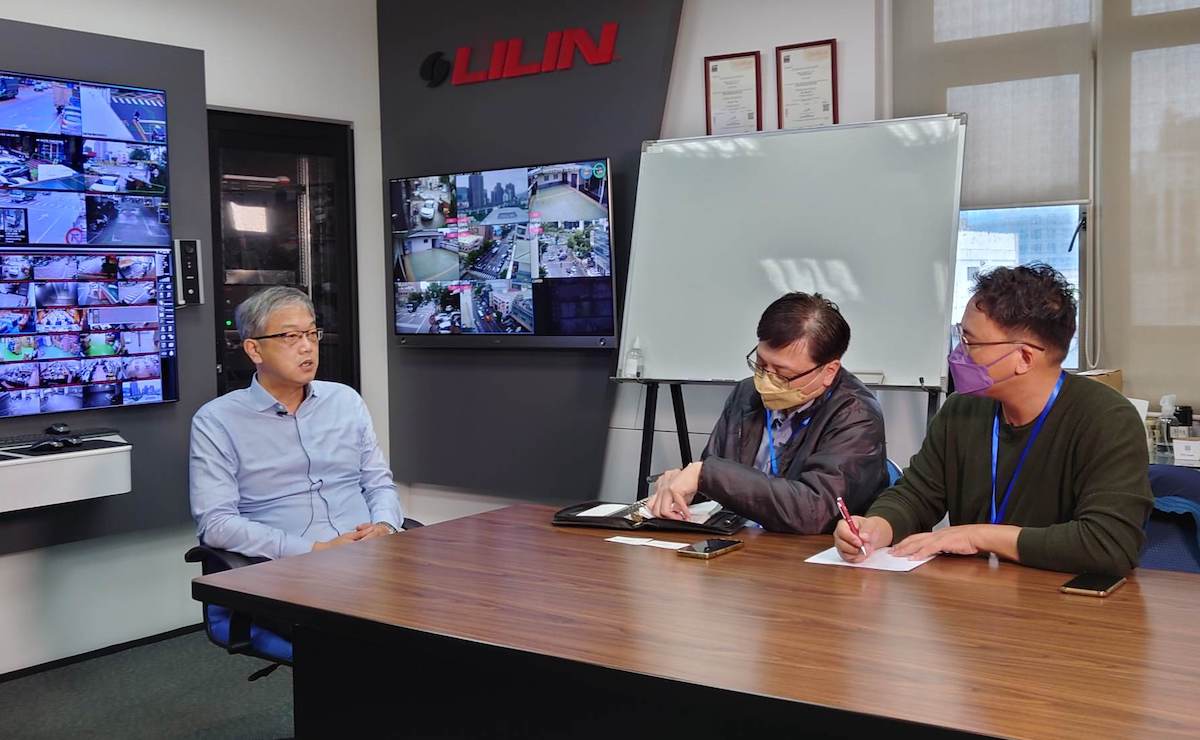In addition to the continuous progressing of vehicle technologies, traffic infrastructures will be more important in the futuristic automotive world. For instance, when speaking of fully-autonomous driving, the driving safety can only be ensured by the complete construction of IoT in traffic infrastructures, so that the autonomous driving technology can be commercialized as soon as possible; The products developed by Lilin Enterprise is related to the intellectualization of traffic infrastructures. In the morning of 9th December, the editors of Auto Future came to the headquarter of Lilin Enterprise located in Wugu, New Tapiei City, to interview with Steve Hu, the CIO of Lilin Enterprise, to discuss about the new technologies and the business opportunities in the future of intelligent transportation.
 Steve Hu (Left), the CIO of Lilin Enterprise, had an interview with Jeff Lee (Middle), Seven Tseng (Right), the editors of Auto Future.
Steve Hu (Left), the CIO of Lilin Enterprise, had an interview with Jeff Lee (Middle), Seven Tseng (Right), the editors of Auto Future.
Lilin Enterprise, which was established in 1980 and had deployed 10 offices around the world, started to transform from camera manufacturing to the development of intelligent traffic surveillance system since 2017. More than half of the employees in the headquarter are software engineers, so it’s a complete AIoT-oriented IT company. Steve Hu mentioned that the turning point for the company transformation is the cooperation with Honda Taiwan about four years ago that they installed the license plate identification devices in the driveways of dealers’ workshops. Because the similar devices cost up to $2,500 USD in other countries, Lilin Enterprise began transforming the PC-based AI technology to NPU (Neural-network processing unit) by edge computing based on cameras. The cloud platform called “Self-AI” can conduct various applications including license plate detection, face recognition, or even animal recognition (a client from Australia made a request of kangaroo recognition), etc., after their clients customized the functions they needed then put it on the cameras that had been implanted high-speed chips made by Lilin Enterprise via the cloud platform. The current business scope of Lilin Enterprise has been expanded to roadside technological law enforcement, the patrol of LRT system, intelligent ship-mooring (it progressed from the early-stage VTC Vessel Traffic Control that needs human manipulation, to the PTZ Pan-Tilt-Zoom spherical tracking cameras developed by Lilin Enterprise), the safety of construction sites (intelligent cameras can detect whether the workers wear protection gears such as helmets), or even the physiological function monitor for the driver in the cabin of vehicles. The drive monitoring system utilize millimeter wave radars to conduct the detection, and their cooperation with carmakers had entered the trial production phase. Generally, the technology development of Lilin Enterprise can be divided into three fields…
- The AI technology of visible light. It includes the detection of moving objects such as human, vehicles, animals, etc.
- The AI technology of invisible light (77 GHz millimeter wave). Lilin Enterprise cooperates with NTUST to identify the far and illegible objects or fast-moving vehicles on road.
- ToF (Time of Flight) distance sensing. Utilize the IR technology to complete far and high-definition 3D rendering.
Lilin Enterprise will play key roles in the management of parking towers (analyze big data collected from different time and floors and provide it to parking lot operators for more efficient backend management) and the development of intelligent IoT roadside infrastructures charged by the transportation departments of the government in the future. They will have significant contributions in the improvement of traffic safety and transportation efficiency.